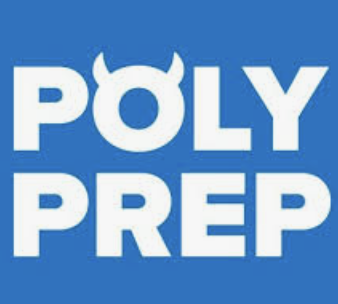As the nation prepares for another pivotal election, the Polygon has been actively engaging the Poly community with articles that prompt meaningful discussions about the current political landscape. Recently, the Polygon released a special edition centered around civic education, aiming to educate students about the government, electoral process, and upcoming election. The Polygon is hoping to foster an environment where political awareness and civic engagement are prioritized. To understand the significance of the Polygon’s current efforts, it is helpful to look back at the Polygon’s past election coverage, specifically the 2016 election.
During the 2016 election, several articles were published in the Polygon, primarily focused on the effects of the election on the Poly community. “We tended to cover [the election] in how it affected the community the most,” explained Virginia Dillon, the Polygon Advisor during the 2016 election and current Head of the History Department. Articles such as “Presidential Election Spurs Debate Over Freedom Of Speech And Safe Spaces” in the November 2016 issue of the Polygon, which talks about the impact of the 2016 election at Poly, and “An Afternoon Of American Politics” in the October 2016 issue of the Polygon, which is about an afternoon where Poly teachers held a civics lesson, are both prime examples of this coverage. When it comes to an election, there are many benefits to this type of local coverage; however, this focus on local coverage can lead to significant gaps in students’ understanding of essential national issues.
While most of the articles covered the aftermath of the election at Poly, there was a lack of attention to key topics like voting rights and how to navigate the voting process. As a result, students may have missed critical information that affected their ability to participate in democracy. This is a factor that should be considered this election season and beyond. Without this information, students might feel unprepared to vote, which could lower their level of civic engagement and understanding of how national policies affect their daily lives. Encouraging knowledgeable and engaged citizenry requires a more balanced strategy that takes into account both local and national viewpoints.
Due to the lack of pre-election coverage in 2016, the Polygon also failed to inform Poly students of the policies of the candidates. Many students were heading to college, where they would soon be able to vote and expected to share their thoughts and opinions on the election. Without being fully informed, those opinions might end up lacking nuance, be shaped by misinformation, or be subject to what one’s friends think. It is crucial to have a solid understanding of current events to be ready for the polarized landscapes within college campuses, and the Polygon could have done a better job of preparing students for that reality.
Despite the lesser attention to a national perspective, there were notable strengths in the Polygon’s approach to election coverage. The presence of opinion articles from both sides of the political spectrum offered a well-rounded view of the issues at stake. A great example of this is “Republican Pride,” in the November 2016 issue of the Polygon, which gave a glimpse into what it feels like to be a Republican in New York. Another helpful piece was “Radical Alternatives To The Two Party System,” which was featured in the same issue and gave great context to how most Democrats felt the day the election was decided. Articles like this encourage students to engage with different perspectives, fostering a culture of critical thinking and dialogue.
Moreover, in 2016, the Polygon excelled in post-election coverage, reflecting on the election results and their implications for the Poly community and beyond. “Staff Editorial: Closing The Divide,” an article from the November 2016 issue, attempted to discuss the aftermath of the election and to encourage unity in the community. This approach aligned with the Polygon’s goal of covering the election through a perspective that speaks to all members of the Poly Prep community. This approach also made the aftermath of the election feel relatively harsh by acknowledging the reactions of both sides. According to Dillon, Poly was a predominantly Democratic school at the time and these articles helped people feel seen and understood in a time when the Poly community was especially sensitive.
Despite the difficulties, it’s important to acknowledge that in 2016 the Polygon didn’t have the same resources as they do today. Specifically, they did not have a journalism teacher as an advisor. While they faced limitations in resources and experience, their commitment to fostering community engagement and dialogue around the election demonstrated a genuine effort.
What can we take away from this? To improve our election coverage going forward, the Polygon can implement several strategies. First, increasing the number of opinion articles from both sides of the political spectrum can provide a more comprehensive view of the issues. This diversity of thought is essential in creating a well-rounded understanding of the political landscape in the U.S. Additionally, the Polygon should continue including ample content on the Poly community’s reaction to the election outcomes, allowing students to see how national events impact their own community. Lastly, continued coverage after the election will be essential–talking about the results’ direct implications on the Poly community will keep the discussion lively and relevant. By emphasizing these areas, the Polygon can better fulfill its objective of fostering engaged and informed students who are ready to take on the responsibilities of democratic participation.































